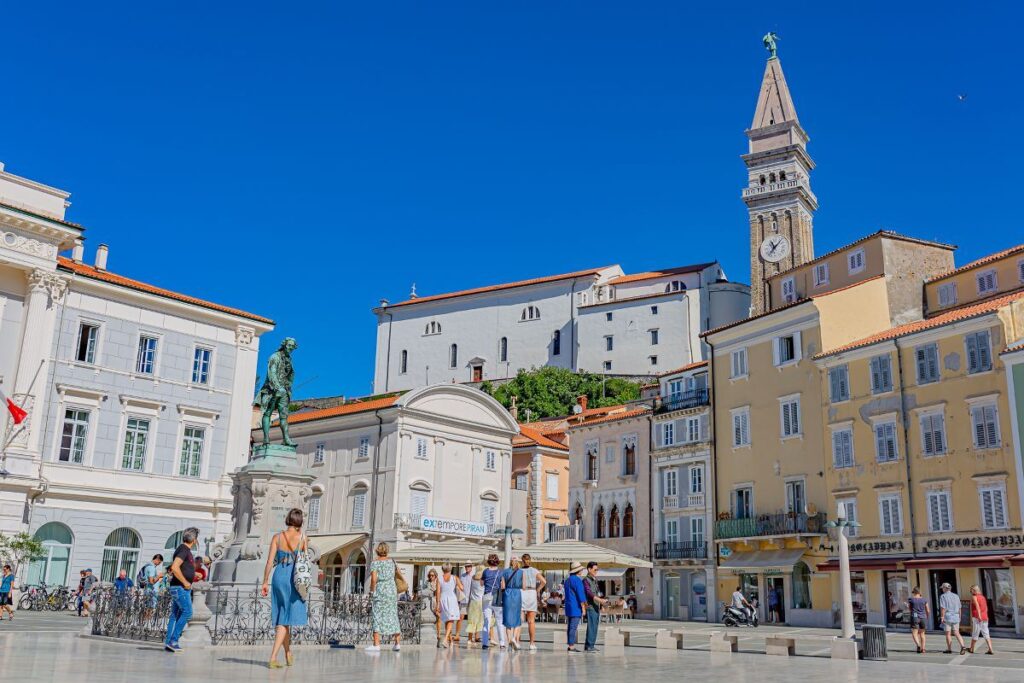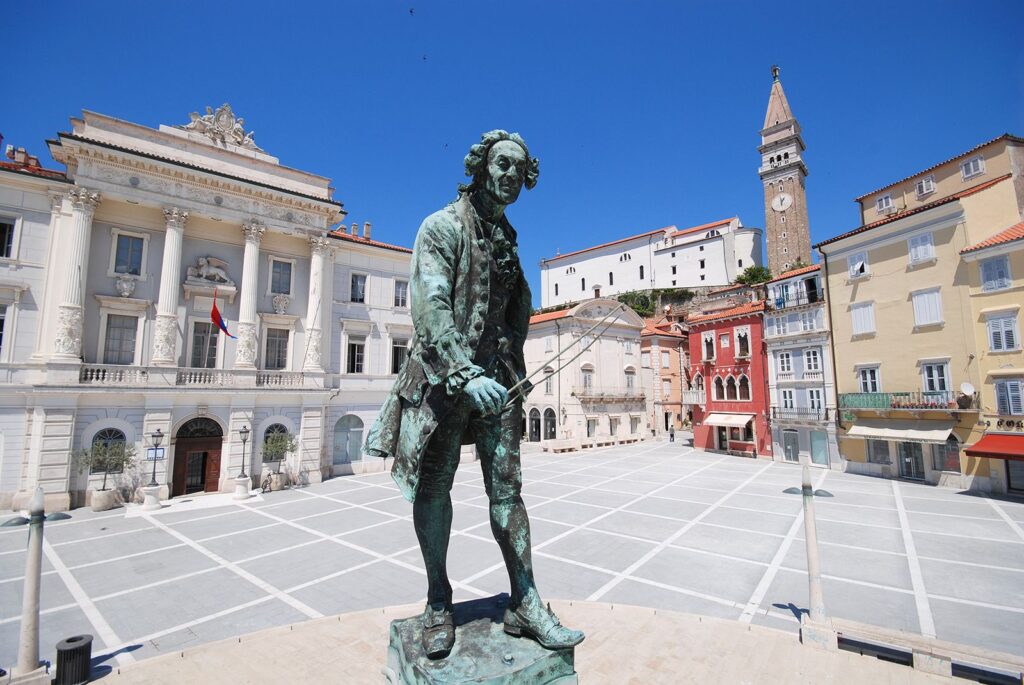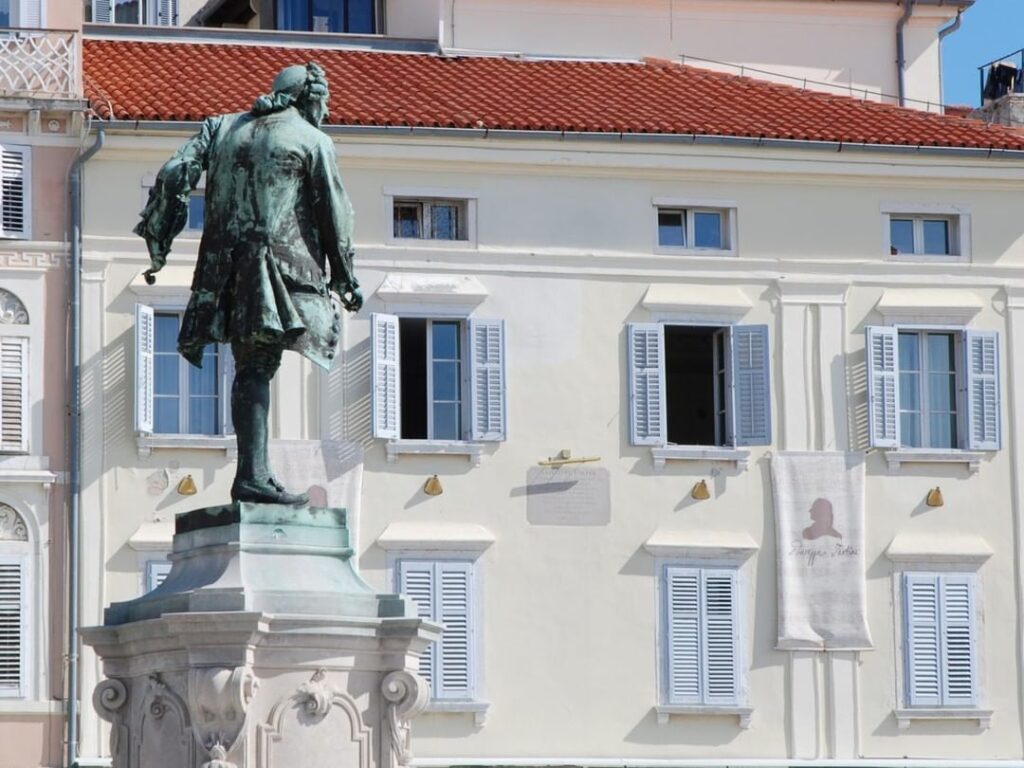From the Devil’s Trill to the New Heart of the Town
In 1692, when Giuseppe Tartini was born in Piran, the town’s core – home to salt workers, fishermen, and merchants – still included an inner fishing harbor, known as mandrač. The future violin virtuoso and composer, famous for The Devil’s Trill, one of the most challenging violin pieces, last saw it in 1708 when he left Piran to study in Padua.
Today, a statue of the violinist, erected in 1896, gazes upon his birthplace. By the bicentennial of Tartini’s birth, the town’s harbor had already been filled in and transformed into the central square, named in honor of the remarkable violinist. Thus, Tartini Square became the new heart of Piran. In the 1980s, the square was redesigned into an elliptical shape and paved with white stone.
Now closed to traffic, it is the town’s most popular meeting place and the perfect starting point for exploring Piran’s many landmarks.
Tartini’s Family
Giuseppe Tartini’s father, Giovanni Antonio, was a Florentine merchant who likely moved to Piran in 1678. In 1685, he married the young Catterina Zangrando. After their wedding, the couple settled in a Gothic house right next to the town’s ancient inner harbor, which would later be filled in and transformed into Tartini Square about 200 years later.
The small harbor was bustling with activity, as boats constantly arrived and departed, carrying all kinds of goods—fish, salt, olives, grapes, wine, fruit, vegetables, quinces, jujubes, wood, chickens, rabbits, and other market produce
In 1692, their son, Giuseppe Tartini, was born.

Tartini’s Musical Journey
Tartini began his career as a teacher and concertmaster in 1715 in Venice, where he moved with his wife. During the carnival season, he traveled extensively, performing with various orchestras and in numerous theaters.
With the support of the wealthy Venetian Giustiniani family, for whom he taught, he secured the position of first violinist and concert director at the renowned orchestra of the Basilica of St. Anthony in Padua in 1721. He remained there for over forty years. Throughout his career, he composed more than 150 violin concertos, sonatas for cello, and nearly 200 solo violin sonatas.

Preserving Tartini’s Legacy
In 1888, grand preparations began for the bicentennial celebration of Giuseppe Tartini’s birth. Funds for the creation and installation of Tartini’s statue in Piran were collected in Trieste, across Istria, and in the Kingdom of Italy.
The statue was commissioned from Venetian academic sculptor Antonio Dal Zotto, who successfully captured a realistic portrayal of the “Teacher of Nations.” It is considered one of Dal Zotto’s most accomplished works. The statue finally arrived in Piran in 1896, and a grand celebration was held, attracting a large crowd from across the region.

